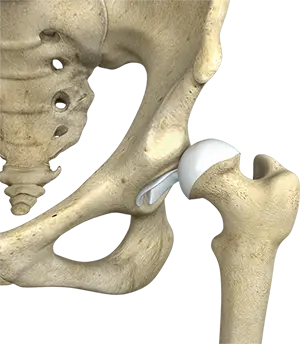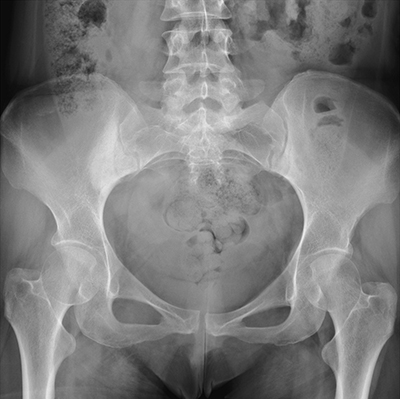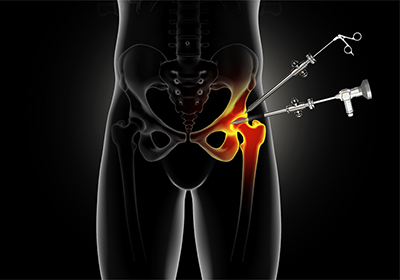Hip Instability

When you walk, stand, sit, and run, your hip plays a significant role, supporting your upper body so you can perform all of these movements. For this reason, hip instability can be challenging, especially as we age. It is estimated that there are 2.8 million patients each year diagnosed with this condition, often arising from a fall or some other previous injury.
In this discussion, we’ll cover the details of hip instability, its symptoms, and how it relates to hip dysplasia. You’ll learn about hip instability tests that can be used to diagnose this problem. In addition, we’ll also touch on related treatments and procedures, such as hip stabilization surgery, hip arthroscopy, capsular plication, and ligamentum teres reconstruction.

Hip Instability Symptoms
Hip instability is a condition in which the hip joint becomes unstable, and the femoral head, or ball of the joint, no longer fits securely in the pelvic acetabulum, the socket. This condition causes the components of the joint to move abnormally, which can cause discomfort and significant pain.
This condition can cause pain in the lower back and groin area. Some patients also describe feeling a particular weakness in the hip joint. They may report popping or clicking sensations, as well as catching of the joint while trying to walk or stand, which can make routine movements challenging.
Here are the most common hip instability symptoms to be aware of:
- Pain in and around the hip area
- Dislocation
- Subluxation (partial dislocation)
- Clicking sounds and/or a grinding sensation in the hip joint
- Feeling like the hip is coming out of the socket
- Laxity or looseness of one’s upper leg
If you experience any of these symptoms, it can indicate instability in your hip joint. It is recommended that you consult with your doctor for proper diagnosis.

Types of Hip Instability
Injuries to the hip joint can damage several areas, including the labrum and the cartilage of the femoral head and acetabulum. Instability in the hips can be classified as traumatic, atraumatic, or chronic:
- Traumatic Instability: This refers to abnormal hip joint movement due to trauma or injury. This means that the joint has been subjected to a forceful impact, which often occurs due to a sports injury or a fall. The damage may also be due to a fracture or a dislocation.
- Atraumatic Instability: This type of instability in the hip can be caused by other factors such as genetic conditions, repetitive overuse, joint stress, and congenital abnormalities. Other factors contributing to this condition include hip dysplasia (undercoverage of the hip socket) or borderline hip dysplasia, connective tissue disorders, neuromuscular disorders, and hypermobility syndrome.
- Chronic Instability: This condition is due to an ongoing and long-standing partial or complete hip joint dislocation. A congenital deformity, connective tissue disorder, or a prior injury can also cause chronic instability.

Hip Instability Tests
Diagnosing instability of the hip includes a physical examination and a detailed medical history. A physical therapist or other healthcare professional can perform these tests.
An example of these tests is the Prone Instability Test, which assesses the stability of the front of your hip joint. You will be asked to lie down in a prone position during this test. The healthcare professional will then flex your knee and, with your leg slightly externally rotated, apply a downward force to the hip. Any pain or excessive movement can indicate instability in the hip.
Other tests can be used to confirm the diagnosis of hip instability. Imaging methods, such as MRI, CT scan, or X-rays, can be used to verify the condition of the joint.

What Is Hip Stabilization Surgery?
The initial treatments for hip instability include conservative measures, including physical therapy. However, when non-invasive procedures have failed, you may have to consider surgery to correct the instability in your hips. The goal of the surgery is to reshape and restabilize various areas of the joint.
This procedure is effective for patients with hip dysplasia, or undercoverage of the hip socket. Nevertheless, just like any other surgery, it carries risks, including infection, nerve damage, and bleeding, so it is best to discuss this option in depth with your healthcare provider. Here are some of the procedures you may want to discuss with your doctor:

Hip Arthroscopy
Hip arthroscopy is a minimally invasive surgery that can be used to address instability in the hip. A small camera called an arthroscope is used to visualize the hip joint. Surgeons can use this procedure to identify damage to structures within the hip joint, including labral tears, as well as bony abnormalities.
Capsular Plication
This procedure is performed to tighten the set of ligaments surrounding the hip joint, known collectively as the capsule. Capsular plication can be performed as a standalone procedure or in conjunction with other treatments, such as hip arthroscopy.
Ligamentum Teres Reconstruction
The ligamentum teres is a structure that serves an important role in stabilizing the ball and socket of the hip joint. A ruptured ligamentum teres can cause pain,a catching sensation, and popping or grinding in the hip during movements. Reconstruction surgery aims to repair the damage to the ligaments using grafts.

Work With the Country’s Leading Hip Experts
The American Hip Institute offers minimally invasive cutting-edge treatments to treat hip problems, including hip instability. Contact us today to schedule a consultation.
